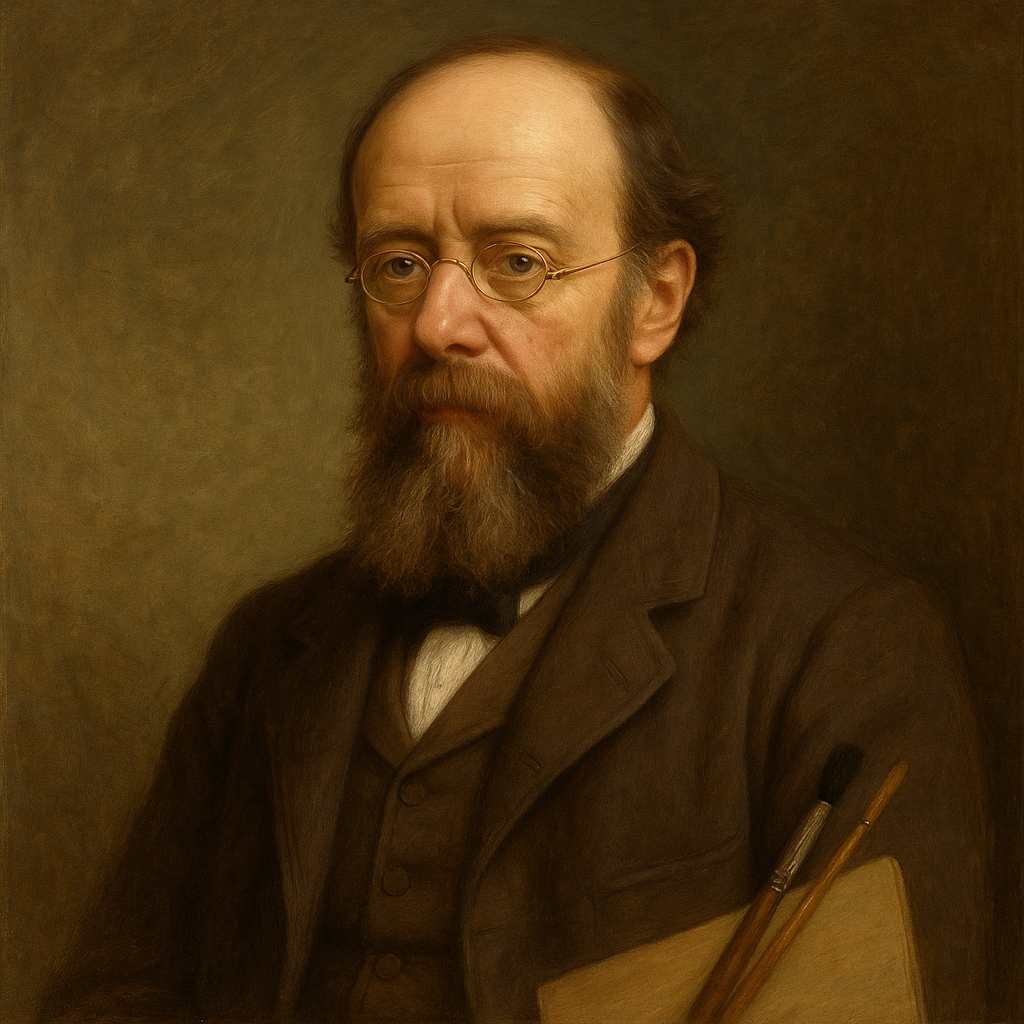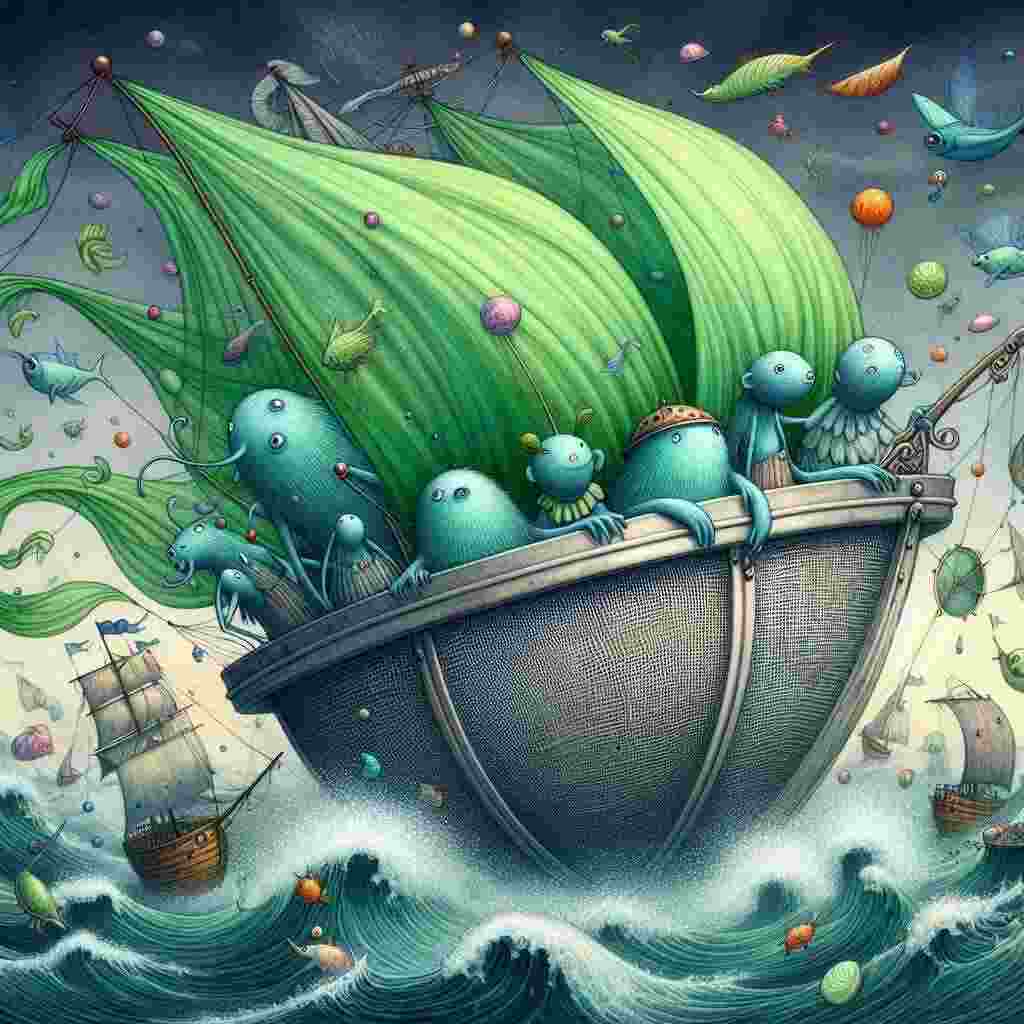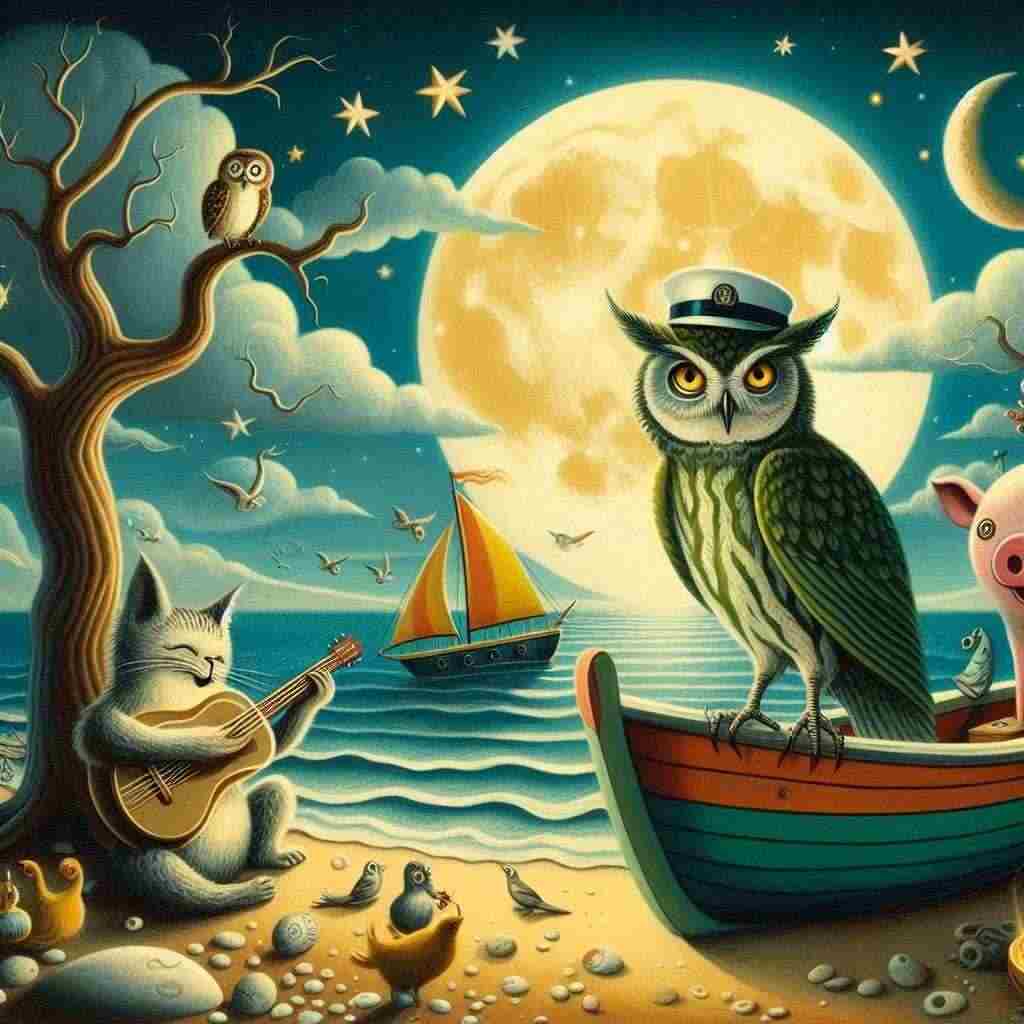2 Poems by Edward Lear
1812 - 1888
Edward Lear Biography
Edward Lear was born on May 12, 1812, in Holloway, London, England. He was the 20th of 21 children born to Jeremiah Lear, a stockbroker, and Ann Clark Skerrett. Due to the family's financial difficulties, Lear was primarily raised by his eldest sister, Ann.
From a young age, Lear showed a remarkable talent for drawing. He began working as a serious illustrator at the age of 15, primarily focusing on natural history subjects. His first published work was "Illustrations of the Family of Psittacidae, or Parrots" in 1830, which was well-received and established his reputation as a skilled ornithological artist.
In 1832, Lear was commissioned by the Earl of Derby to create drawings of the animals in his private menagerie at Knowsley Hall. This opportunity led to Lear spending much of the 1830s creating natural history illustrations for scientific publications.
Lear's career took a significant turn in the 1840s when he began publishing books of nonsense poetry and limericks. His first book of nonsense, "A Book of Nonsense," was published in 1846 under the pseudonym "Derry down Derry." This work, filled with whimsical limericks and illustrations, became immensely popular and established Lear as a master of the nonsense genre.
Throughout his life, Lear struggled with health issues, including epilepsy, bronchitis, and depression. He was also troubled by his sexuality, never marrying despite forming close friendships with both men and women. These personal challenges often influenced his work, with themes of isolation and melancholy appearing in many of his writings.
Despite his health problems, Lear was an avid traveler. He spent much of his adult life abroad, living in Italy and traveling extensively throughout Europe, the Middle East, and India. His travels inspired numerous landscape paintings and travel books, including "Journals of a Landscape Painter in Albania" (1851) and "Views in the Seven Ionian Islands" (1863).
Lear's nonsense works continued to grow in popularity. He published several more collections, including "Nonsense Songs, Stories, Botany, and Alphabets" (1871) and "Laughable Lyrics" (1877). These books featured some of his most famous poems, such as "The Owl and the Pussycat" and "The Jumblies."
As a writer, Lear is credited with popularizing the limerick form, though he did not invent it. His nonsense verse often featured invented words, absurd situations, and clever wordplay. Beyond limericks, he wrote longer narrative poems, songs, and alphabets, all characterized by their whimsical nature and often accompanied by his own illustrations.
Lear's influence extended beyond literature. He was a skilled musician and composer, setting many of his poems to music. He also continued his work as a landscape painter throughout his life, with his artworks now held in collections around the world.
In his later years, Lear settled in San Remo, Italy. He continued to write and paint until his death on January 29, 1888, at the age of 75. His last book, "Nonsense Songs and Stories," was published posthumously in 1895.
Edward Lear's legacy is multifaceted. While he is best remembered for his nonsense poetry, which continues to delight readers of all ages, he was also a significant figure in natural history illustration and landscape painting. His work influenced generations of writers and artists, from Ogden Nash to Spike Milligan, and his nonsense verse remains a beloved part of English literature. Lear's ability to blend humor with underlying themes of loneliness and alienation has ensured his enduring appeal to both children and adults.
This text was generated by AI and is for reference only. Learn more
Username Information
No username is open
Everything is free to use, but donations are always appreciated.
Quick Links
© 2024-2025 R.I.Chalmers (V2Melody).

All music on this site by R.I.Chalmers (V2Melody) is licensed under a Creative Commons Attribution-NonCommercial 4.0 International License.
Attribution Requirement:
When using this music, you must give appropriate credit by including the following statement (or equivalent) wherever the music is used or credited:
"Music by R.I.Chalmers (V2Melody) – https://v2melody.com"
Support My Work:
If you enjoy this music and would like to support future creations, your thanks are always welcome but never required.
Thanks!



